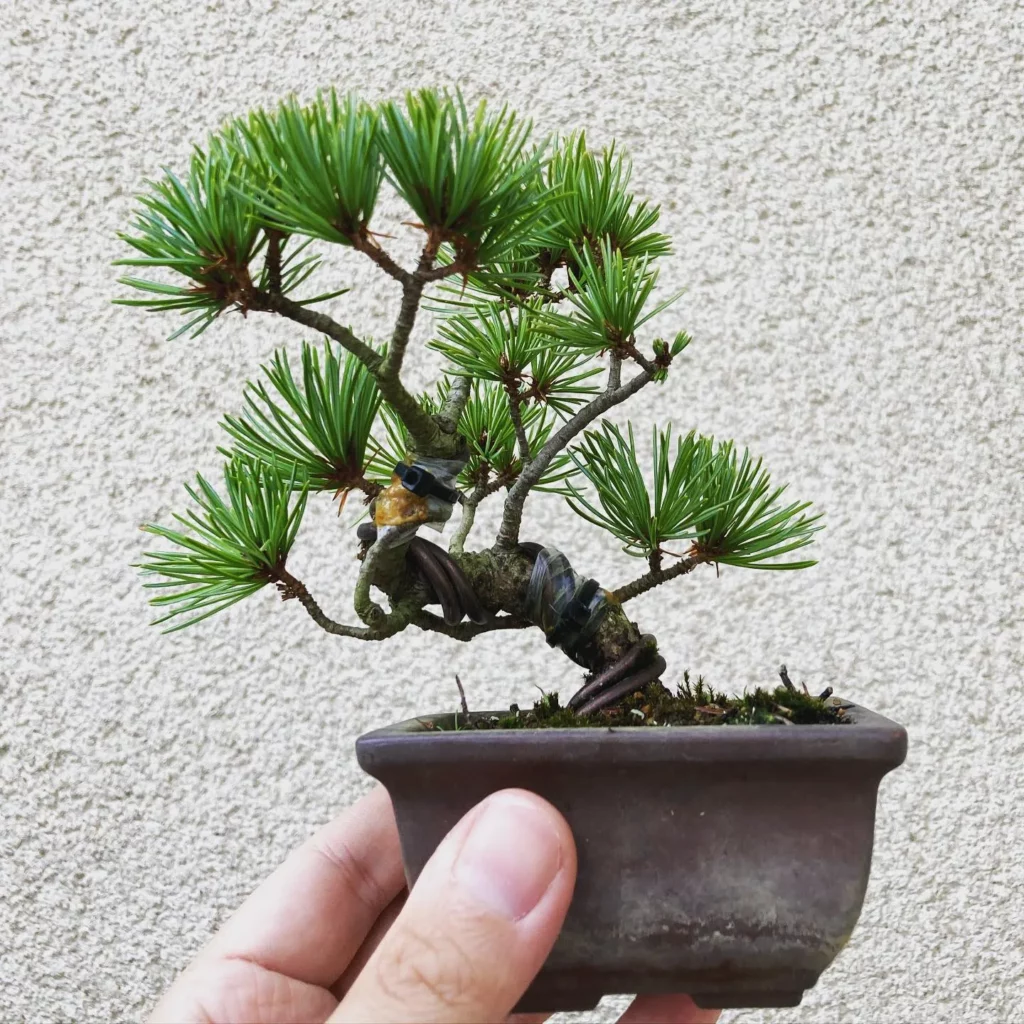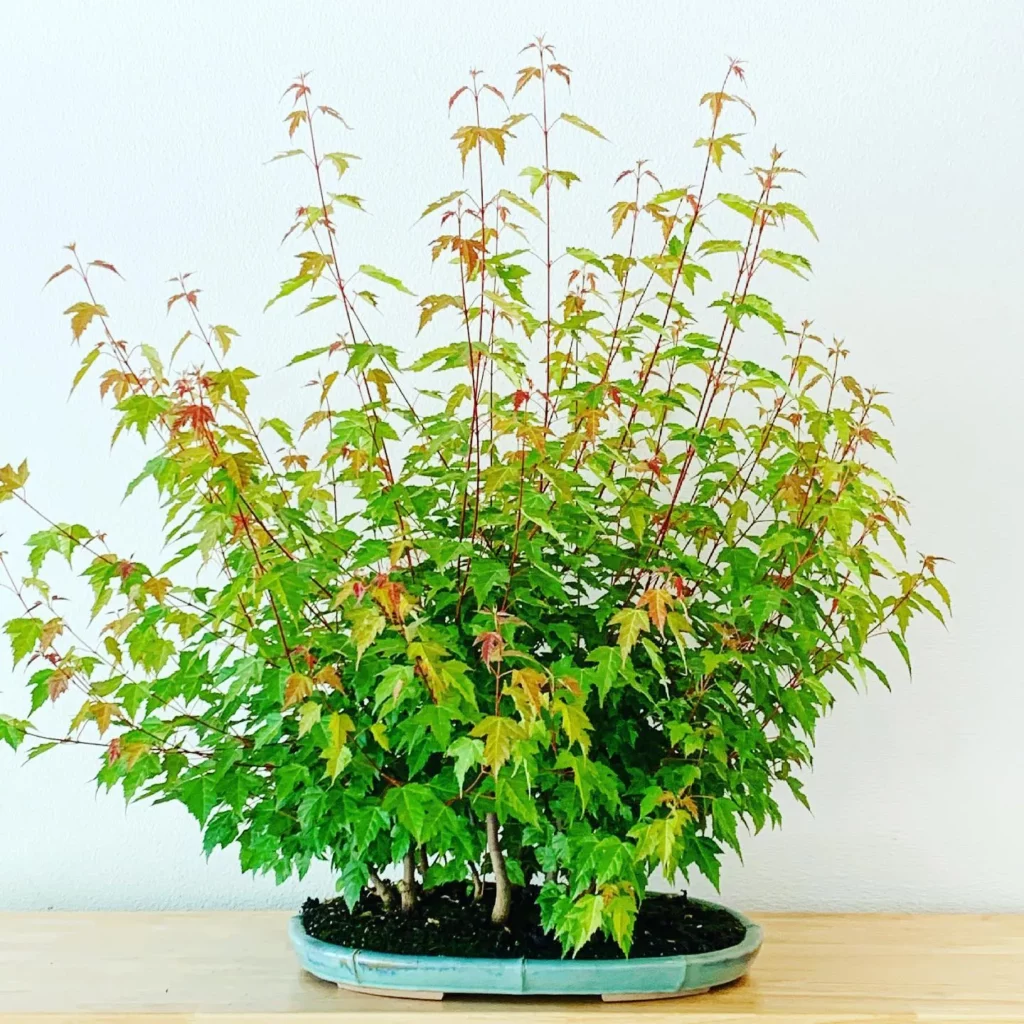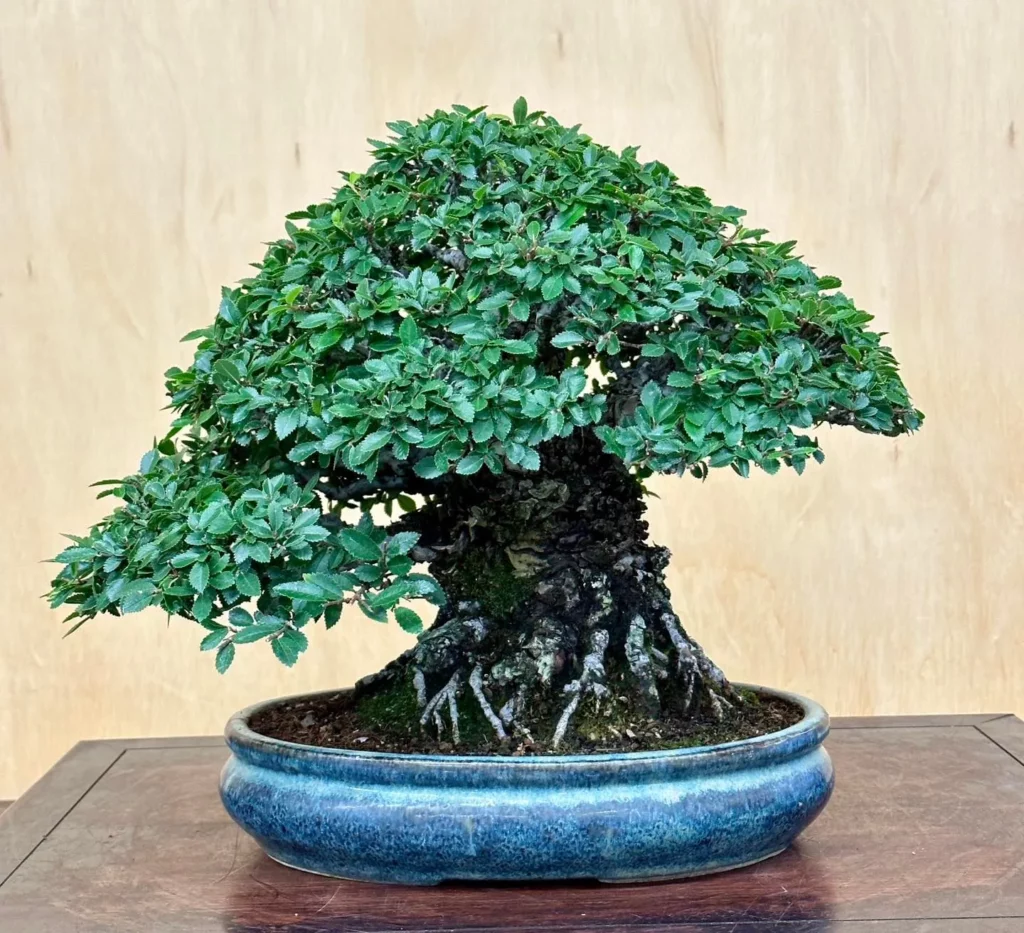Welcome to our article on Mealy Bugs and how to control and prevent infestations on your beloved Bonsai trees. Mealy Bugs are small insects that can wreak havoc on these delicate plants, causing wilting, yellowing, and even death if not addressed promptly. But don’t worry, we’ve got you covered with effective strategies to keep your Bonsai healthy and thriving.
In this article, we will delve into what Mealy Bugs are and the impact they can have on your plants. We will also explore the importance of proper plant care, including watering techniques, fertilization, and lighting conditions, as preventive measures against Mealy Bug infestations. Additionally, we will equip you with valuable tips for identifying Mealy Bugs and differentiating them from other pests.
But that’s not all – we’ll also provide you with practical prevention and control measures, ranging from cultural practices to natural remedies and chemical control options. By the end of this article, you’ll have all the knowledge you need to protect your Bonsai trees from these pesky intruders.
What Are Mealy Bugs?

Mealy Bugs are small insects that belong to the family Pseudococcidae. They have soft bodies covered in a white waxy substance that acts as a protective layer. These insects feed on the sap of plants by piercing them with their straw-like mouthparts, resulting in damage to the leaves and stems.
Mealy Bugs are known to cause significant harm to plants, affecting their overall health and appearance.
- Their waxy substance serves as a protective coating, helping them adhere to plants.
- These insects extract sap from the host plant, depriving it of essential nutrients.
- As they feed, Mealy Bugs produce honeydew, a sticky substance that can attract other pests and promote the growth of sooty mold.
- Infestations can weaken the plant, causing wilting, yellowing leaves, stunted growth, and even plant death if left untreated.
The Impact of Mealy Bugs on Plants
Mealy Bugs can cause significant damage to both indoor and outdoor plants. These small insects feed on the sap of plants, depleting them of vital nutrients and affecting their overall health. If left untreated, Mealy Bug infestations can result in various detrimental effects on plants.
Wilting and Yellowing Leaves
One of the noticeable signs of Mealy Bug damage is the wilting and yellowing of leaves. As Mealy Bugs feed on the plant sap, they disrupt the flow of nutrients, leading to the decline of leaves. Leaves may become weak, wilted, and develop a yellowish hue, adversely affecting the plant’s aesthetic appeal.
Stunted Growth
Mealy Bugs can hinder the growth of plants by impeding nutrient absorption. As the bugs continue to feed on the sap, the plant’s ability to grow and develop properly is compromised. This can result in stunted growth, with the plant failing to reach its full potential and size.
Potential Plant Death
In severe cases, Mealy Bug infestations can lead to plant death. By depriving the plant of essential nutrients and weakening its overall health, Mealy Bugs can ultimately cause irreversible damage that results in the plant’s demise. It is crucial to address and treat Mealy Bug infestations promptly to prevent such devastating consequences.
Spread of Sooty Mold and Attraction of Other Pests
Mealy Bugs excrete a sugary substance called honeydew, which can create an ideal environment for the growth of sooty mold. This black, powdery fungus can cover the leaves and inhibit photosynthesis, further impairing the plant’s health. Additionally, Mealy Bugs can attract other pests like ants, which may further compromise the plant’s well-being.
The Importance of Proper Care for Plants
When it comes to dealing with Mealy Bugs, prevention is key. Providing proper care for your plants plays a crucial role in preventing infestations and promoting overall plant health. Here are some essential care tips to keep in mind:
- Water: Ensure your plants receive adequate water based on their unique needs. Avoid overwatering, as it can create damp conditions that attract pests. On the other hand, underwatering can weaken plants and make them more susceptible to infestations. Regularly check the soil moisture to determine when to water.
- Fertilization: Proper fertilization is essential for plant health and resilience against pests. Provide the necessary nutrients to your plants based on their specific requirements. This will help strengthen their natural defenses and minimize the risk of Mealy Bug infestations.
- Sunlight: Ensure your plants receive adequate sunlight according to their light requirements. Proper exposure to sunlight promotes strong growth and improves the plant’s ability to ward off pests and diseases.
Identification of Mealy Bugs

Mealy Bugs are small, soft-bodied insects covered in a white waxy substance. They can be easily identified by their physical characteristics. Mealy Bugs have oval-shaped bodies, six legs, and long mouthparts that they use to feed on plant sap. These pests can infest various plants, including bonsai trees.
Signs of a Mealy Bug infestation include the presence of white cottony masses on the plant, wilting or yellowing leaves, and distorted foliage. Another indication is the presence of honeydew, a sticky substance secreted by the bugs, which can lead to the growth of sooty mold.
It’s important to differentiate Mealy Bugs from other pests that may have similar signs and symptoms. Unlike scale insects, which have protective scales resembling part of the plant, Mealy Bugs have a white waxy coating. Additionally, Mealy Bugs can be distinguished from aphids by their elongated body shape and the absence of wings.
If you suspect that your plant is infested with Mealy Bugs, it is crucial to take immediate action to prevent further damage and spread. Regular inspections and early detection are key to effective control and treatment of Mealy Bugs.
Prevention and Control Measures
To keep your bonsai trees free from Mealy Bug infestations, it is important to implement appropriate preventive measures and utilize effective control strategies. By following cultural practices, employing natural remedies, and considering chemical control options when necessary, you can effectively manage Mealy Bugs and maintain the health of your bonsai collection.
Cultural Practices
- Maintain overall plant health by providing proper watering, fertilization, and lighting conditions.
- Space your bonsai trees adequately to reduce overcrowding, as it can create favorable conditions for Mealy Bugs.
- Regularly inspect your trees for signs of infestation, such as white cottony masses or wilting leaves.
Natural Remedies
If you notice a mild Mealy Bug infestation on your bonsai trees, you can turn to natural remedies to control the issue:
No products found.
- Neem oil: A natural insecticide derived from the neem tree, neem oil can be effective in repelling and killing Mealy Bugs. Dilute it according to the manufacturer’s instructions and apply it to the affected areas.
- Rubbing alcohol: Dabbing a cotton swab soaked in rubbing alcohol on the Mealy Bugs can dehydrate and kill them.
- Soap solutions: Mix a mild liquid soap with water and spray it on the affected areas. This suffocates the bugs and helps control the infestation.
Chemical Control Options
In severe cases where natural remedies are not effective, you may need to consider chemical control options. However, it’s important to exercise caution when using these methods:
- Insecticidal soaps: These soaps work by penetrating the insect’s outer shell and disrupting its cell membranes. Follow the instructions provided by the manufacturer and apply the soap spray to the Mealy Bugs.
- Systemic insecticides: These insecticides are absorbed by the plants and ingested by the Mealy Bugs, effectively killing them. Choose a systemic insecticide labeled for use on bonsai trees and apply it according to the instructions.
Mealy Bug Plant Care Tips
Proper care for your plants is crucial in preventing Mealy Bug infestations and maintaining their overall health. By following these plant care tips, you can create an environment that discourages Mealy Bugs and promotes optimal plant growth.
1. Watering Techniques
One of the most important aspects of plant care is proper watering. Check the soil moisture regularly and avoid overwatering or underwatering your plants. Mealy Bugs are attracted to moisture, so it’s important to find the right balance. Allow the soil to dry slightly between waterings to discourage their presence.
No products found.
2. Fertilization Requirements
Ensuring that your plants receive proper nutrition is vital in preventing Mealy Bug infestations. Follow the recommended fertilization requirements for your specific plants, providing them with essential nutrients for strong growth. Healthy, well-nourished plants are better equipped to resist pests and diseases.
3. Lighting Conditions
Optimal lighting conditions play a crucial role in plant health and pest prevention. Different plants have varying lighting requirements, so it’s important to provide the appropriate amount of light for your specific plants. Ensure they receive enough natural or artificial light for photosynthesis to occur properly, as this helps deter Mealy Bugs.
Scale Insects
Scale Insects are common pests that can wreak havoc on your beautiful bonsai trees. These sap-sucking insects have protective scales that blend in with the tree, making them difficult to detect. However, their feeding habits can cause significant damage if left unchecked.
When scale insects feed on the sap of your bonsai trees, they deplete the nutrients necessary for healthy growth. This can lead to wilting foliage, yellowing leaves, and stunted growth. Additionally, scale insects excrete a sticky substance called honeydew, which can attract other pests and promote the growth of sooty mold.
How to identify Scale Insects
Identifying scale insects can be a challenge, as they often blend in with the bark of your bonsai tree. However, there are some key signs to look out for:
- Small bumps or shells that resemble part of the tree’s natural features
- Sticky residue on the leaves and branches, indicating honeydew production
- Wilting foliage, yellowing leaves, and stunted growth
Control measures for Scale Insects
If you discover scale insects on your bonsai trees, it’s important to take immediate action to prevent further damage. Here are some control measures you can implement:
- Use white oil: White oil is an effective insecticide that can suffocate and kill scale insects. Apply it to the affected areas following the product instructions.
- Systemic insecticides: If the infestation is severe, systemic insecticides can be used. These are absorbed by the tree and kill the insects when they feed on the sap.
- Maintain proper hygiene: Regularly clean your bonsai tree and remove any fallen leaves or debris that may harbor scale insects.
Aphids
Aphids are common pests that can be a nuisance for bonsai tree enthusiasts. These tiny insects have a voracious appetite for the sap of bonsai trees, which can lead to several problems if left unchecked.
One of the main issues with aphid infestations is the damage they can cause to the trees. As they feed on the sap, the leaves of the bonsai tree may begin to wilt and turn yellow. This can impact the overall health and appearance of the tree, making it less attractive.
Another consequence of aphids feeding on bonsai trees is the production of honeydew. Honeydew is a sticky substance that aphids excrete as they feed. This sugary substance can attract other pests, such as ants, and promote the growth of sooty mold.
To control aphid infestations on your bonsai trees, there are several measures you can take. One option is to use contact sprays like Congaurd, which help eliminate aphids on contact. Another effective method is to use soap/oil mixtures, which suffocate and kill aphids while being safe for your trees.
Prevention is also an important aspect of aphid control. Maintaining good hygiene in your bonsai trees, such as regularly cleaning away fallen leaves and debris, can help prevent aphids from finding a hospitable environment. Additionally, providing optimal growing conditions for your trees, such as appropriate watering and fertilization, can strengthen their natural defenses against aphids and other pests.
Spider Mites
Spider Mites are tiny arachnids that can wreak havoc on your bonsai trees. These sap-sucking pests can cause significant damage, leading to wilting leaves and a weakened tree if left uncontrolled. Protecting your bonsai from Spider Mites is crucial for its health and longevity.
Identifying Spider Mite Infestations
Detecting Spider Mites early on is essential for effective control. Look out for signs such as discolored leaves, stippling (tiny yellow dots), and fine webbing on the leaves and branches. If you observe these symptoms, it’s likely that your bonsai has a Spider Mite infestation.
Controlling Spider Mite Infestations
To effectively control Spider Mites on your bonsai trees, it’s important to take proactive measures. Here’s what you can do:
- Miticide Application: Utilize miticides specifically formulated to target Spider Mites. Be sure to follow the product instructions carefully and apply them as directed to effectively eliminate the pests.
- Maintaining Optimal Growing Conditions: Spider Mites thrive in dry and dusty environments. To discourage their presence, ensure you maintain good growing conditions for your bonsai. Adequate humidity and regular misting can help create an unfavorable environment for these pests.
- Isolation: If you discover a Spider Mite infestation on one bonsai tree, it’s best to isolate it immediately to prevent the pests from spreading to other plants. Quarantine the affected tree and treat it separately to avoid further damage.
- Regular Inspection: Stay vigilant and inspect your bonsai trees regularly for any signs of Spider Mites or other pests. Early detection is key to preventing infestations from escalating and causing extensive damage.
Identifying Mealy Bug Infestations

Mealy Bug infestations can be easily identified by their physical characteristics and the signs and symptoms they cause. By recognizing these key features, you can take prompt action to control and prevent further damage.
Physical Characteristics
Mealy Bugs have a distinctive appearance with their white, waxy coating and oval-shaped bodies. This protective layer acts as a shield against predators and environmental factors, making them easily recognizable on plants.
Signs and Symptoms
There are several signs and symptoms that indicate a Mealy Bug infestation:
- White Cottony Masses: Look for clusters of white, cotton-like masses on the leaves, stems, and other parts of the plant. These are Mealy Bug colonies.
- Wilting or Yellowing Leaves: Infested plants often exhibit wilting or yellowing of their leaves. This is a result of the Mealy Bugs depleting the sap and nutrients from the plant.
- Distorted Foliage: Mealy Bugs can cause distortion and curling of leaves, resulting in abnormal growth patterns.
- Honeydew and Sooty Mold: Mealy Bugs excrete a sticky substance called honeydew, which attracts ants and can lead to the growth of black, sooty mold on the plant’s surface.
Treating Mealy Bugs on Bonsai Trees

If you’ve discovered a Mealy Bug infestation on your bonsai trees, don’t panic! With the right treatment and preventative measures, you can control these pesky insects and keep your trees healthy. The key to successfully treating Mealy Bugs is a combination of natural remedies and chemical control options, depending on the severity of the infestation.
Prevention is the first line of defense. Keeping your bonsai trees in optimal health is crucial for preventing Mealy Bug infestations. Make sure to regularly inspect your plants for any signs of these insects, such as white cottony masses or wilting leaves. Maintaining good overall plant health, including proper watering, fertilization, and sunlight, will help strengthen your trees and make them more resistant to infestations.
When it comes to treatment, natural remedies can be effective. Neem oil is a popular choice due to its natural insecticidal properties. Dilute neem oil according to the instructions and apply it to the affected areas, making sure to cover all the Mealy Bugs. Another option is using a soap solution or rubbing alcohol to kill the bugs. These remedies can be sprayed directly onto the insects, suffocating them and preventing further damage.
In severe cases, chemical control options may be necessary. If natural remedies don’t provide adequate control, you can consider using insecticidal soaps or systemic insecticides. It’s important to follow the instructions carefully and apply these chemicals sparingly, as they can be harmful if misused. Always prioritize safety and protect yourself and the environment when using chemical control options.
After this check out our other articles on:
FAQ
What are Mealy Bugs?
Mealy Bugs are small insects that belong to the family Pseudococcidae. They have soft bodies covered in a white waxy substance that acts as a protective layer. They feed on the sap of plants, causing damage to leaves and stems.
What is the impact of Mealy Bugs on plants?
Mealy Bugs can cause significant damage to both indoor and outdoor plants. They deplete plant sap of vital nutrients, resulting in wilting, yellowing leaves, stunted growth, and even plant death. Severe infestations can also lead to the growth of sooty mold and attract other pests.
How can Mealy Bug infestations be prevented and controlled?
Prevention is key when it comes to dealing with Mealy Bugs. Proper care of plants includes providing adequate water, fertilization, and sunlight based on each plant’s unique needs. Regular inspection for signs of infestation is also crucial for early detection and treatment. Natural remedies like neem oil, rubbing alcohol, and soap solutions can be effective in controlling mild infestations. In severe cases, chemical control options like insecticidal soaps and systemic insecticides can be used with caution.
How can Mealy Bugs be identified?
Mealy Bugs are small, soft-bodied insects covered in a white waxy substance. They can be identified through their oval-shaped bodies, six legs, and long mouthparts. Signs of infestation include white cottony masses, wilting or yellowing leaves, distorted foliage, and the presence of honeydew and sooty mold. Mealy Bugs can be differentiated from other pests like scale insects and aphids based on their physical characteristics and behavior.
How can Mealy Bug infestations be prevented on bonsai trees?
Cultural practices such as maintaining overall plant health, proper spacing, and regular inspection can help prevent Mealy Bug infestations. Natural remedies like neem oil, rubbing alcohol, and soap solutions can be effective in controlling mild infestations. In severe cases, chemical control options like insecticidal soaps and systemic insecticides can be used with caution.
What are the care tips for preventing Mealy Bug infestations on plants?
Proper watering techniques, including checking soil moisture and avoiding overwatering or underwatering, are essential in preventing Mealy Bug infestations. Fertilization requirements should be met to provide essential nutrients for plant health. Optimal lighting conditions promote photosynthesis and help prevent infestations.
What are Scale Insects?
Scale Insects are sap-sucking insects that can cause significant damage to bonsai trees. They have protective scales that resemble part of the tree. They feed on sap, leading to wilting, yellowing foliage, and the production of honeydew. Control measures include using white oil, systemic insecticides, and proper hygiene.
What are Aphids?
Aphids are common pests that feed on the sap of bonsai trees. They can cause wilting, yellowing leaves, and the production of honeydew. Control measures include using contact sprays like congaurd and soap/oil mixtures, as well as maintaining good hygiene and growing conditions for the trees.
What are Spider Mites?
Spider Mites are tiny arachnids that feed on the sap of bonsai trees. They can cause significant damage, including wilting leaves and a weakened tree. Control measures include using miticides and maintaining good growing conditions for the trees.
How can Mealy Bug infestations be identified?
Mealy Bug infestations can be identified through physical characteristics such as their white, waxy appearance and oval-shaped bodies. Signs of infestation include the presence of white cottony masses, wilting or yellowing leaves, distorted foliage, and the presence of honeydew and sooty mold.
How can Mealy Bugs on bonsai trees be treated?
Mealy Bugs can be treated through a combination of prevention and control measures. This includes maintaining overall plant health, inspecting for signs of infestation, and using natural remedies like neem oil or soap solutions. In severe cases, chemical control options like insecticidal soaps and systemic insecticides can be used with caution.




